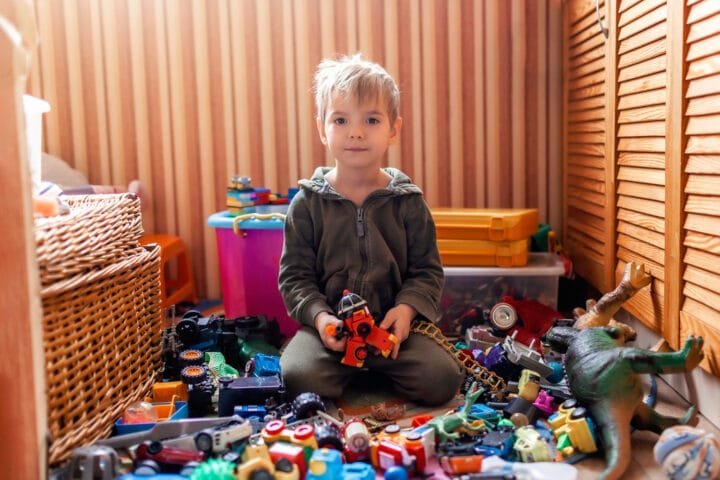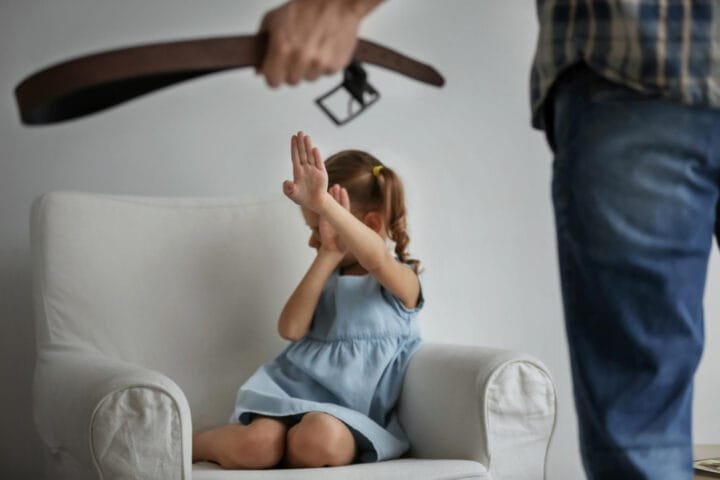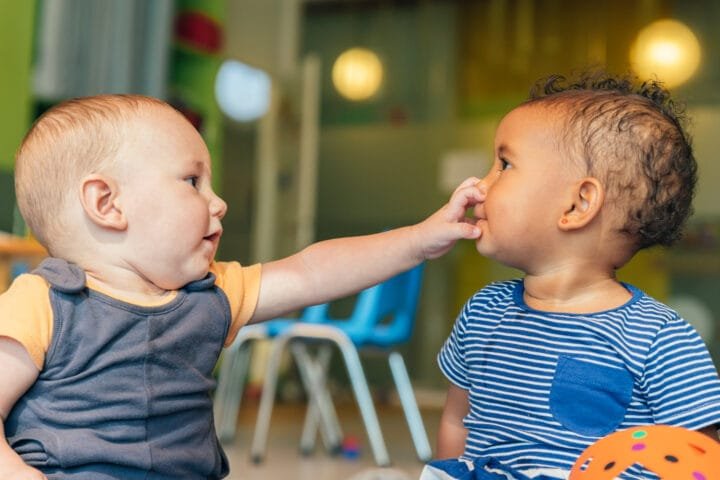Decoding Childhood ADHD: A Practical Guide for Parents and Educators
Is your child always bursting with energy? Do they flit from one activity to the next like a hummingbird, often leaving things unfinished? Do they find it hard to follow instructions, even simple ones and their emotions seem to change as quickly as the weather? If your child has been diagnosed with ADHD, I understand how tough it can be. Just know that you’re not alone. This guide is here to help you understand ADHD, navigate its challenges, and empower your child to thrive through your understanding, patience, and committed support.
What is ADHD, Anyway?
ADHD, which stands for Attention-Deficit/Hyperactivity Disorder, is a neurodevelopmental condition that impacts millions of children worldwide. It commonly includes difficulties with attention, hyperactivity, and impulsivity. However, it’s essential to understand that ADHD is not simply about being busy or not listening; it is related to how the brain is wired.
ADHD in a Nutshell: More Than Just “Busy” or “Fidgety”
Imagine a brain like a superhighway with many exits and no speed limits. That’s what it’s like for kids with ADHD. Their brains constantly process information, which makes it hard to filter out distractions and focus on one thing. This can lead to challenges with:
- Paying attention: Staying focused on tasks, especially ones that aren’t super interesting, can feel impossible.
- Controlling impulses: Acting without thinking, interrupting others, or having trouble waiting their turn are everyday struggles.
- Managing activity levels: They seem like they have a motor that never stops running!
Busting Myths and Misconceptions: Setting the Record Straight
Let’s clear up some common ADHD myths:
- ADHD is not caused by bad parenting, too much screen time, or overeating sugar. It’s an actual medical condition with a biological basis.
- Children with ADHD aren’t just “lazy” or “unmotivated.” They often want to do well but struggle with the skills needed to succeed.
- ADHD doesn’t just disappear with age. While symptoms may change, many individuals continue to experience challenges into adulthood.
The Brain and ADHD: A Quick Look Under the Hood
Research indicates that variations in brain structure and function are significant factors in ADHD. The areas of the brain responsible for attention, executive function, and impulse control may develop differently in children with ADHD. This can impact their capacity to plan, organize, and manage emotions and behaviour.
Spotting the Signs: How ADHD Impacts Kids
ADHD can look different in different kids. Some children are primarily inattentive, struggling to focus and stay organized. Others are predominantly hyperactive-impulsive, always on the go and acting without thinking. Many have a combination of both.
Inattention, Hyperactivity, and Impulsivity: What Do They Look Like?
- Inattention: A child with inattentive ADHD might daydream, lose things frequently, have trouble following instructions, or seem forgetful. They may struggle to complete tasks, especially ones that require sustained mental effort.
- Hyperactivity: This can manifest as constant fidgeting, restlessness, excessive talking, or an inability to sit still. They might seem like they’re always “on the go.”
- Impulsivity: Children with impulsivity might interrupt conversations, blurt out answers, have trouble waiting their turn, or act without considering the consequences.
ADHD at School: Challenges with Learning, Attention, and Behavior
School can be a real struggle for kids with ADHD. Sitting still, listening to lectures, and completing assignments can feel overwhelming. They might have trouble:
- Staying focused in class: Distractions are everywhere, making paying attention to the teacher hard.
- Following directions: Multi-step instructions can be confusing, leading to incomplete work or misunderstandings.
- Organizing materials: Their backpacks and desks might be black holes where papers and assignments disappear.
- Completing homework: Getting started, staying on track, and remembering to turn it in can be significant hurdles.
These challenges can impact academic performance and lead to frustration for the child and their teachers. It’s important to remember that these struggles are not due to a lack of intelligence or effort. Children with ADHD often need extra support and accommodations to succeed in the classroom.
ADHD at Play: Social Skills, Emotional Regulation, and Making Friends
ADHD can also affect a child’s social life. Difficulties with impulse control, emotional regulation, and social cues can make navigating friendships and social situations challenging. They might:
- Interrupt others frequently: Excited to share their thoughts, they might not realize they’re cutting someone else off.
- Have trouble taking turns: Waiting patiently can be challenging, leading to peer conflicts.
- Misinterpret social cues: They might miss subtle signals like facial expressions or body language, leading to misunderstandings.
- Struggle with emotional outbursts: Frustration, anger, or disappointment can escalate quickly, leading to meltdowns or tantrums.
These challenges can make making and keeping friends difficult, leading to feelings of loneliness or isolation. Supporting children with ADHD in developing social skills and emotional regulation strategies is crucial for their overall well-being.
ADHD at Home: Family Dynamics and Everyday Life
Living with a child with ADHD can be both rewarding and challenging. The constant activity, impulsivity, and emotional ups and downs can strain family relationships. Parents might find themselves:
- Constantly reminding and redirecting: “Please sit down,” “Don’t interrupt,” and “Remember to put your shoes away” can become a constant refrain.
- Dealing with frequent meltdowns: Frustration and overwhelm can lead to explosive outbursts that are difficult to manage.
- Feeling overwhelmed and exhausted: The demands of parenting a child with ADHD can take a toll on parents’ emotional and physical well-being.
Families must find strategies for managing ADHD symptoms, building positive relationships, and creating a supportive home environment. This can include setting clear and consistent rules, providing a structured routine, and offering praise and rewards for good behavior. It’s also important to take care of yourself as a parent, seeking support from other parents, professionals, and community resources.

Is it ADHD? The Journey to Diagnosis
If you suspect your child might have ADHD, seeking a professional evaluation is the crucial first step. A comprehensive assessment can provide clarity and guide you in the right direction.
When to Seek Professional Help: Recognizing Red Flags
Consider seeking an evaluation if you notice the following:
- Significant challenges with attention, hyperactivity, or impulsivity: These are persistent, occur across different settings (home, school, social situations), and interfere with daily life.
- Academic struggles: Despite the effort, your child is falling behind in school, struggling to complete assignments, or experiencing behavioral problems in the classroom.
- Social difficulties: Your child has trouble making or keeping friends, experiences frequent conflicts with peers, or struggles with social cues.
- Emotional dysregulation: Your child has frequent emotional outbursts, difficulty managing frustration, or experiences intense mood swings.
The Evaluation Process: What to Expect
A comprehensive ADHD evaluation usually involves the following:
- Clinical interviews: The evaluator will gather information about your child’s developmental history, behavior, and symptoms. They may interview you, your child, teachers, or other caregivers.
- Observations: The evaluator may observe your child in different settings (e.g., classroom, playground) to assess their behavior and interactions.
- Standardized assessments are questionnaires or rating scales completed by parents, teachers, and sometimes the child. They help measure the severity of ADHD symptoms.
- Neuropsychological testing: In some cases, additional testing may be recommended to assess cognitive abilities, such as attention, memory, and executive function.
It’s important to note that no single test definitively diagnoses ADHD. The diagnosis is based on a comprehensive evaluation of all available information.
Co-existing Conditions: Untangling ADHD from Anxiety, Learning Disabilities, and More
ADHD often occurs alongside other conditions, such as:
- Anxiety disorders: Children with ADHD may also experience excessive worry, fear, or nervousness.
- Learning disabilities: Difficulties with reading, writing, or math can co-occur with ADHD, making it challenging to succeed academically.
- Oppositional defiant disorder (ODD): This involves a pattern of defiant, argumentative, and hostile behavior towards authority figures.
- Mood disorders: Depression and bipolar disorder can also co-occur with ADHD.
Identifying and addressing co-existing conditions is crucial for developing an effective treatment plan.

Helping Kids Thrive: Treatment and Support Strategies
There is no one-size-fits-all cure for ADHD, but there are many effective treatments and support strategies that can help children manage their symptoms and thrive. A multi-faceted approach is often the most successful.
Behavioral Therapy: Teaching Skills and Managing Behaviors
Behavioral therapy is a cornerstone of ADHD treatment. It teaches children skills to manage their attention, impulsivity, and hyperactivity. Common approaches include:
- Parent training: Parents learn strategies for managing their child’s behavior, providing positive reinforcement, and creating a structured home environment.
- Cognitive behavioral therapy (CBT) helps children identify and change negative thought patterns and develop coping mechanisms for managing challenges.
- Social skills training: Children learn to interact appropriately with others, interpret social cues, and resolve conflicts peacefully.
Medication: Understanding the Options and Making Informed Decisions
ADHD medications can be effective in treating symptoms. They adjust the brain’s chemistry and improve attention, impulse control, and hyperactivity. Both stimulant and non-stimulant medications are frequently prescribed.
- Stimulants: These medications increase the levels of certain neurotransmitters in the brain, improving focus and reducing impulsivity. They are generally safe and effective but can have side effects like decreased appetite, sleep problems, and irritability.
- Non-stimulants: These medications work differently than stimulants and may be an option for children who don’t tolerate stimulants well or have certain medical conditions.
An informed decision to use medication should be made with the help of a qualified healthcare professional. They can explain the potential benefits and risks, monitor for side effects, and adjust doses accordingly.
Support at School: IEPs, 504 Plans, and Classroom Accommodations
Children with ADHD may be eligible for special education services or accommodations at school. These can help them access the curriculum and succeed in the classroom.
- IEPs (Individualized Education Programs): These legal documents outline specific educational goals, services, and supports for students with disabilities.
- 504 Plans: These plans provide accommodations and modifications to help students with disabilities access the learning environment and participate fully in school activities.
Examples of classroom accommodations might include:
- Preferential seating: Sitting near the teacher and away from distractions.
- Extra time for assignments: Allowing more time to complete tests or projects.
- Breaking down tasks: Dividing large assignments into smaller, more manageable chunks.
- Use of visual aids: Providing graphic organizers, checklists, or other visual tools to support learning.
- Assistive technology: Using tools like text-to-speech software or noise-cancelling headphones.
Working closely with your child’s school to develop and implement an appropriate plan is essential for their academic success.
Parenting Strategies: Building a Positive and Supportive Home Environment
Parents play a vital role in helping children with ADHD thrive. Here are some strategies that can make a big difference:
- Create a structured environment: Establish consistent meal routines, homework, bedtime, and other activities. Use visual schedules and checklists to help your child stay organized.
- Provide clear expectations: Communicate your expectations clearly and consistently. Break down tasks into smaller steps and provide frequent positive feedback.
- Use positive reinforcement: Focus on rewarding positive behaviors rather than punishing negative ones. Catch your child doing things right and praise their efforts.
- Teach self-regulation skills: Help your child learn to identify and manage their emotions. Teach coping strategies for dealing with frustration and anger.
- Prioritize quality time: Spend one-on-one time with your child doing activities they enjoy. This helps build a strong connection and fosters positive self-esteem.
- Take care of yourself: Parenting a child with ADHD can be demanding. Make sure to prioritize your well-being by getting enough sleep, exercising, and seeking support from other parents or professionals.

ADHD and Beyond: Looking Ahead
ADHD is a lifelong condition, but with the proper support and strategies, children with ADHD can lead happy and successful lives.
Fostering Strengths and Building Resilience
Children with ADHD often have unique strengths such as creativity, energy, and enthusiasm. Focusing on nurturing these strengths and helping your child develop a positive self-image is essential. Encourage them to pursue their passions and celebrate their accomplishments.
Teach your child resilience by helping them learn from setbacks and develop coping strategies for challenges. Encourage them to persevere through difficulties and celebrate their efforts, even if they don’t consistently achieve their goals.
Supporting Emotional Well-being and Social Skills
Children with ADHD may be more likely to experience anxiety, depression, and low self-esteem. It’s important not to overlook your child’s emotional well-being and to seek professional help if needed. You can support them in managing stress and anxiety by teaching them healthy coping mechanisms such as exercise, relaxation techniques, and mindfulness.
Additionally, continue to foster your child’s social development by providing opportunities to interact with peers and practice their social skills. Encourage them to engage in activities they enjoy and assist them in building positive relationships.
Advocating for Your Child: Working with Schools and Healthcare Providers
Communication is the key to ensuring your child receives the support and accommodations they need by actively advocating for them. Work closely with their school and healthcare providers to ensure your child receives individualized support. Connect with other parents and support groups to share experiences and learn from others. Educate yourself about ADHD and the available resources.
5 highly-regarded books
Taking Charge of ADHD: The Complete, Authoritative Guide for Parents” by Russell A. Barkley: This comprehensive guide offers practical strategies for managing ADHD symptoms, improving academic performance, and fostering positive behavior.
Driven to Distraction (Revised): Recognizing and Coping with Attention Deficit Disorder” by Edward M. Hallowell and John J. Ratey: This classic book provides valuable insights into the experience of living with ADHD, offering guidance for children and adults.
The Explosive Child: A New Approach to Understanding and Parenting Easily Frustrated, Chronically Inflexible Children” by Ross W. Greene: This book introduces the Collaborative problem-solving approach, offering practical strategies for managing challenging behaviors in children with ADHD and other conditions.
Smart but Scattered: The Revolutionary “Executive Skills” Approach to Helping Kids Reach Their Potential” by Peg Dawson and Richard Guare: This book focuses on developing executive function skills in children, providing practical tools and techniques for improving organization, planning, and self-regulation.
Raising an Organized Child: 5 Steps to Boost Independence, Ease Frustration, and Promote Confidence” by Damon Korb: This book offers a step-by-step approach to helping children develop organizational skills, which can be particularly beneficial for those with ADHD.
Summary
The ADHD condition can be challenging for children, but with the right approach, they can thrive. Early intervention, a comprehensive treatment plan, and a supportive environment are essential. Working together can help children with ADHD reach their full potential and lead happy, fulfilling lives. Remember to emphasize your child’s strengths, foster resilience, and advocate for their needs.
FAQs
It’s like they have a motor that never stops running! They might be bouncing off the walls, blurting out answers, or constantly fidgeting. Focusing on anything feels impossible, especially if it’s not super exciting. They might also struggle to follow directions or seem forgetful.
There’s no one-size-fits-all test. It usually involves a chat with a doctor or specialist, like a pediatrician or psychologist. They’ll ask you many questions about your child’s behavior, development, and challenges. Your observations and insights are crucial in this process. They might also observe your child in different settings, like at school or on the playground.
It’s often a mix of things! Therapy can teach kids valuable skills to manage their attention and impulses. Sometimes, medication can help by tweaking brain chemistry to improve focus and reduce hyperactivity. And don’t forget about support at school, like extra time for tests or a quieter workspace.
Consistency is key! Set clear routines, break tasks into smaller steps, and use positive reinforcement. Help them manage their emotions and find healthy ways to cope with frustration. And remember, you need to take care of yourself too!
They can absolutely thrive! It’s about focusing on their strengths, building their resilience, and advocating for their needs. With the right support, kids with ADHD can achieve amazing things and live happy, fulfilling lives. Their journey may have unique challenges, but it’s also filled with potential and promise.
Related Posts











































































